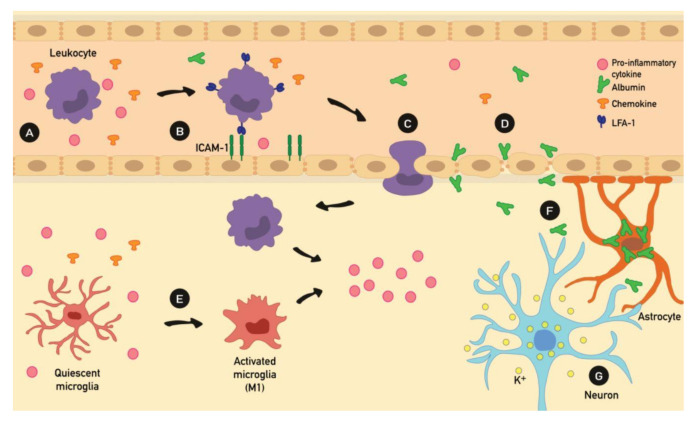Figure 2.
Cascade of events during inflammation-mediated seizures. (A) An initiating inflammatory challenge causes an increase of proinflammatory mediators such as cytokines and chemokines, (B) which in turn leads to an upregulation of leukocyte ligands (e.g., LFA-1) and endothelial counterligands (e.g., ICAM-1), eventually resulting in leukocyte recruitment. (C) Upregulation of adhesion molecules reflected in leukocyte migration into the brain parenchyma and (D) a morphological change in the endothelial cells’ shape, finally resulting in an alteration of tight junctions; these processes will lead to blood–brain barrier (BBB) leakage with the extravasation of serum components (e.g., albumin). (E) Microglial cells are consequently activated by proinflammatory cytokines. (F) Moreover, the albumin extravasation induces a decrease of inward-rectifying K+ channels in astrocytes, leading to an increase of extracellular potassium in brain parenchyma. (G) Therefore, the higher extracellular K+ level facilitates neuronal hyperexcitability and induces seizure activity.

